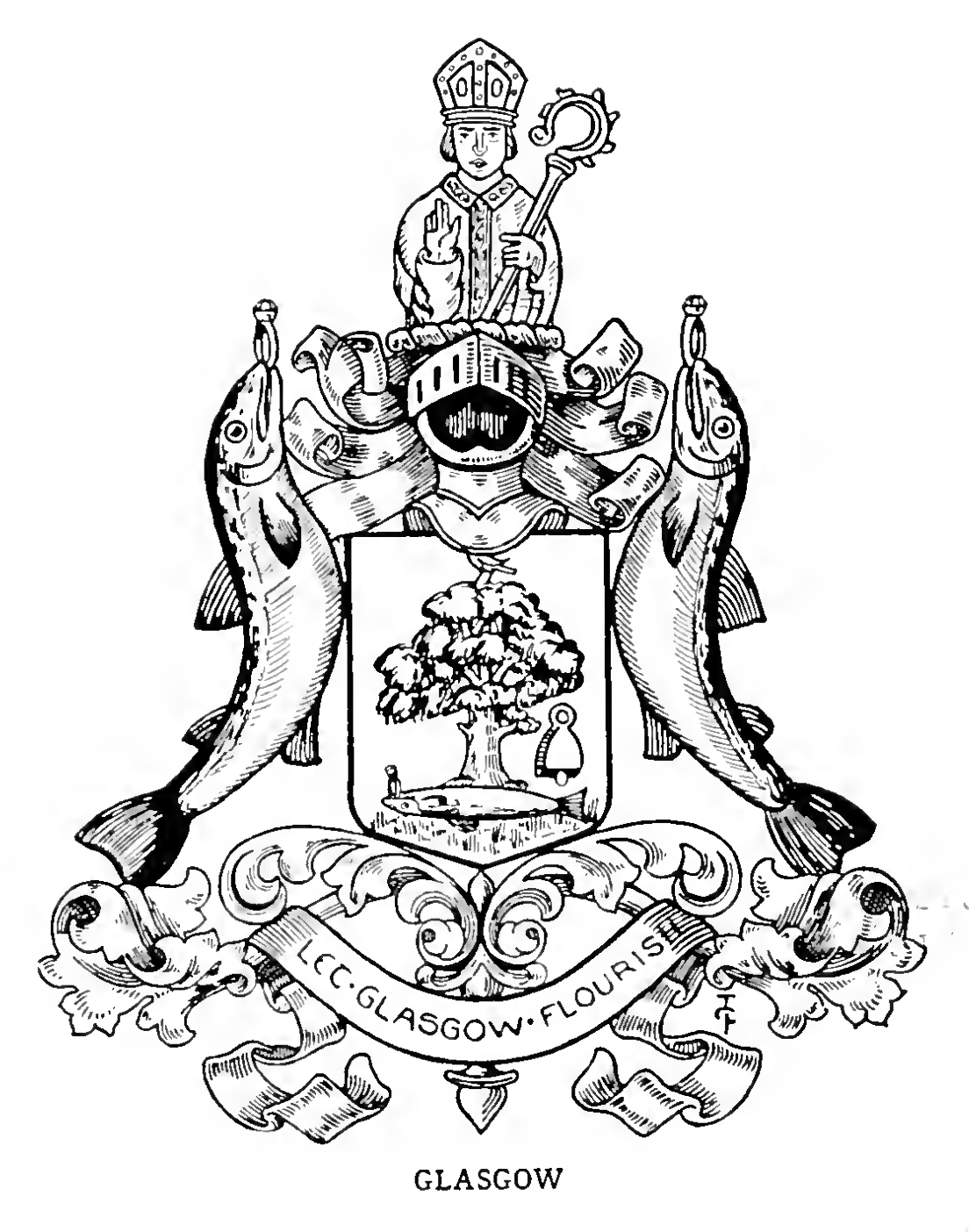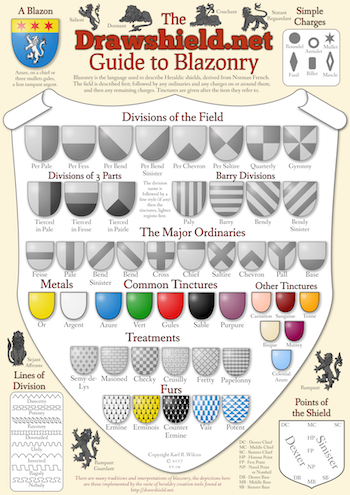GLASGOW.
GLASGOW. Argent, on a mount in base vert an oak-tree proper, the stem at the base thereof surmounted by a salmon on its back also proper, with a signet-ring in its mouth or, on the top of the tree a redbreast, and in the sinister fesse point an ancient hand-bell, both also proper. Above the shield is placed a suitable helmet with a mantling gules doubled argent, and issuing from a wreath of the proper liveries is set for Crest — The half-length figure of Saint Kentigern affronte, vested and mitred, his right hand raised in the act of benediction, and having in his left hand a crozier, all proper. On a compartment below the shield are placed for Supporters — Two salmon proper, each holding in its mouth a signet-ring or, and in an escroll entwined with the compartment this Motto —
" Let Glasgow Flourish." Matriculated the 25th day of October 1866.
The following legends, taken from a newspaper cutting, are quoted for what they may be worth : —
The armorial insignia of Glasgow are richly storied, the different emblems referring to several legends in the life of St Kentigern, otherwise called Mungo, who was the first Bishop of Glasgow, and died about A.D. 602. The tree represents the bough which, according to an old story, St Kentigern kindled by his word into a blaze in order to relight the church lights, which some of his enemies had put out. The bird perched upon the tree is a robin, the pet of St Serf, which St Kentigern restored to life, as the tradition goes. The bell which hangs from the tree signifies the Church and See of Glasgow, founded by St Kentigern.
[Another account gives a more probable explanation as follows : " The bell is the consecrated one that was brought from Rome by St Mungo when he visited the sacred city in his later years, and which was placed in the College buildings, and preserved in Glasgow till the Reformation, or perhaps to a later date. It was called St Mungo's Bell, and was tolled through the city to warn the inhabitants to pray for the repose of a departed soul."]
But the most romantic legend of all is associated with the salmon bearing the ring in its mouth. It happened that the Queen of Cadzow had given away a ring which she had received as a present from the King, her husband, to a certain knight. The King suspecting this, and being very much angered at such conduct, considered how he might best punish it. One day when they were all out for a hunting party along the banks of the Clyde, the knight to whom the Queen had given the ring, overcome with fatigue, fell asleep under the shelter of a tree. The King seized the opportunity to look into the knight's pouch, and there, as he had expected, he found the ring. Wroth beyond measure that the Queen should so have treated the ring he had given her, he flung it into the river. Returning home, he demanded the ring of the Queen, and said she should be put to death if she did not give it him. She immediately sent her maid to the knight to ask for it, but, of course, he could no longer find it. The Queen knew not which way to turn. At last, she bethought herself of the good Bishop Kentigern. She avowed her fault to him, and convinced him that she was deeply sorry for it, and asked his advice and help. The good
man believed in her sincerity and took compassion upon her. He immediately sent one of his people to fish in the river and to bring him the first fish he should catch. The angler soon returned, and laid a huge salmon at the feet of the bishop, who took from its mouth the very ring which the King had flung into the Clyde. The Queen, receiving the ring from the bishop, together with his blessing, hastened to take it home to her husband, and thus her life was saved by the good Bishop Kentigern.
Before the matriculation above mentioned the arms were frequently to be found with the field " party per fesse argent and gules."
The " Ordnance Gazetteer of Scotland," referring to the arms, says :
"These tokens appear on the Seals of the Bishops of Glasgow in the I2th and 13th centuries, from which they were transferred to the Common Seal of the city in the beginning of the 14th."
Original Source bookofpublicarms00foxd_djvu.txt near line 10966.

Please Help!
DrawShield is a Free service supported by its users.

If you can, please help cover the cost of the server, or just buy the team a coffee to say thanks!
 Buy me a coffee
Buy me a coffee


